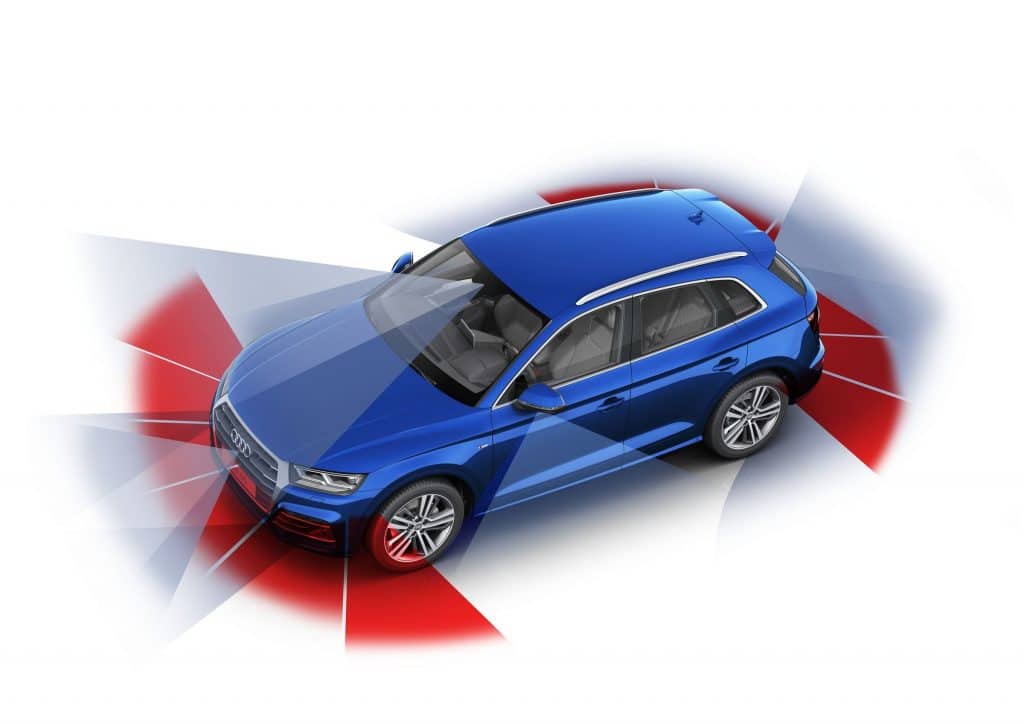Our advanced driver assistance systems (or ADAS, pronounced eh-dahs) database and rankings will help you identify the latest new car tech, what they are specifically called by car manufacturers (the options) and what models have them available. We also index the technology stack/supplier they are built on (such as NVIDIA or Mobileye) and rank our on-going impressions with these systems as we have hands-on tests.
Often called autopilot or self-driving, we prefer to call the technology by its industry standard name of ADAS.
What cars have the best ADAS?

To make things simple, we have identified lane centering and adaptive cruise control as key features to qualify. Hands-off is a bonus, but growing in availability.
We are aware of other ADAS systems, such as parking assistance, auto emergency braking, blind-spot monitoring but have not included them in our data as they are nearly ubiquitous across the industry. We are considering auto-parking as a new column in the future.
We are ranking the following key options (see definitions below):
- Automatic Lane Changes
- Adaptive Cruise Control
- Lane Centering
- Hands-off Functionality
ADAS Database and Ranking
This is a work in progress database, please let us know of any issues, email [email protected].
ADAS broken-down view by auto manufacturer
What cars have Mobileye EyeQ1, EyeQ2, EyeQ3, EyeQ4?
Check the “technology stack” column in our database above – if we’ve been able to determine the Mobileye stack or version involved, we have noted it. We hope to improve this over time, but this information is hard to come by as most manufacturers do not publicly disclose this info, but we think it’s critical info that tech-focused buyers should know.
What cars use NVIDIA self driving tech?
NVIDIA is an upcoming player in the ADAS space, but not new to chip set production (they are the leader in computer graphic GPUs, which have a ton of processing power per watt, highly desirable in the car). Learn more about NVIDIAs ADAS Technology.
ADAS Terminology Reference
Automatic Lane Changes: using the car’s sensors, the vehicle can automatically or on-demand by turning on the turn signal in the desired direction, make a lane change for you.
Adaptive Cruise Control: using forward distance sensors, the vehicle will adjust and maintain a set distance from the vehicle in front of you, all the way down to a stop. Most systems do not automatically resume from a stop, but some do (look for stop and go functionality).
Lane Centering (or Lane Tracing): An upgraded technology from lane keeping, lane centering is an active, constant convenience feature that works to keep the car centered in the current lane. This takes over for the many small micro-adjustments that a typical driver must make during driving. Limits of this system vary, depending on clear lane markings, but also in turns (simpler systems only make gentle turns, more advanced ones can handle very sharp turns).
Hands-off Functionality: The ability for the driver to completely remove their hands from the wheel. It is expected that the driver is still paying complete attention to the road, which may be monitored by other sensors/cameras instead of detecting the hand on the wheel (either by pressure or steering wheel turning-torque).
Advanced driver assistance systems have been a major focus in the automotive industry over the past few years. The introduction of this technology has changed how drivers and passengers interact with their vehicles, but there are many different options to choose from that may not be easy to decipher. Our goal is to help you explore what features each ADAS option offers and rank them by which features you need most and which are the best.
Driver assistance history
The first types of Driver Assistance Systems (or “Driver Assist”) were very basic. Traction Control and Anti-Lock breaks are considered the first generation of these technologies and surely have saved countless lives by automating the vehicle’s brakes and wheel spin.
Forward collision warning and adaptive cruise control grew from these basics systems in the late 1990s.
In the 2000s, Lane Departure Warning Systems (LDWS) emerged. These systems include lane departure warning and blind-spot monitoring. These safety-focused have been proven to reduce crashes by up to 20%.
Next-generation ADAS will save many more, but also increase the overall convenience of driving.
The road to self-driving automobiles
Eventually, all this technology will be rolled into one, fully automated self-driving car. With the ability to make all of these decisions thousands of times a second, a self-driving car is far superior to even the most skilled and attentive drivers. Computers don’t get tired and they certainly don’t take their eyes off the road to check their smartphone. Learn more about why self-driving isn’t here yet.
New Car Tech Delivered Weekly...
Get all the latest in New Car Tech via email. Once a week.


